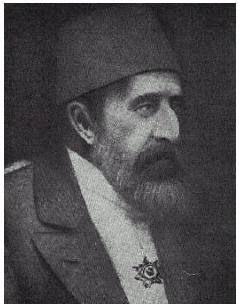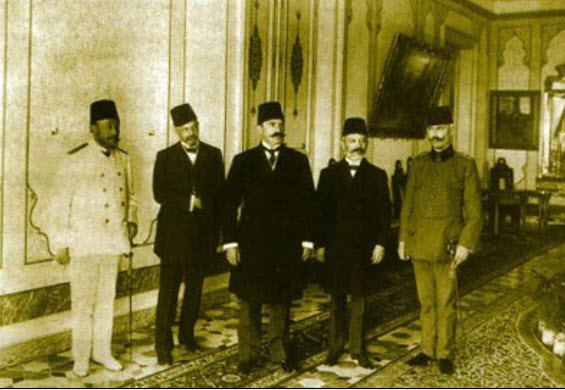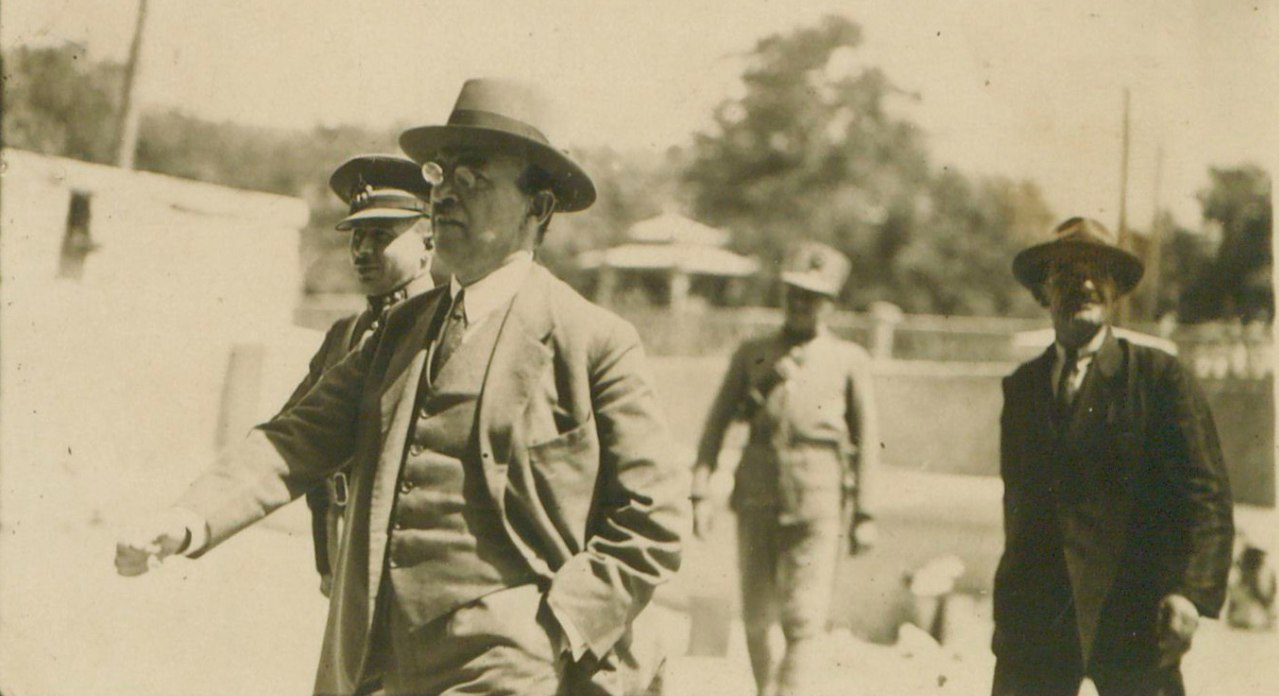<Back to Index>
- Member of the Young Turks Emmanuel Carasso, 1862
- Member of the Committee of Union and Progress Mehmet Cavit Bey, 1875
PAGE SPONSOR


Emmanuel Carasso or Emanuel Karasu (Salonica, 1862 - Trieste 1934) was a lawyer and a member of the prominent Sephardic Jewish Carasso family of Ottoman Salonica (now Thessaloniki, Greece). He was a prominent member of the Young Turks. The name is also spelled Karaso, Karassu and Karasso. The form Karasu is a Turkification of his name, meaning literally 'black water'.
Karasu was a member (some sources say founder) and later president of the Macedonian Risorta Masonic lodge in Thessaloniki and pioneered the masonic movement within the Ottoman Empire. Masonic lodges and other secret societies in Salonica were meeting places for sympathizers of the Young Turks, including Talaat Pasha. Karasu was one of the first non - Muslim members of the Ottoman Freedom Society, which later became part of the Committee of Union and Progress (CUP); when the CUP came to power, he became the Salonica deputy in the Ottoman parliament. He was offered various positions in the Ottoman government, but turned them down. Karasu was one of the three men who told Sultan Abdülhamit II of his deposition in April 1911. He worked for the cooperation of various Jewish organizations in Turkey, and insisted that Turkish Jews were Turks first and Jews second. He was a member of the committee which negotiated the treaty ending the Italo - Turkish War and of the committee to internationalize the city of Salonika. He lost favor under Atatürk and went into exile in Italy; he died in 1934, and is buried in the Jewish cemetery in Arnavutköy, Istanbul.
He was the uncle of Isaac Carasso, the founder of Groupe Danone.

Mehmet Cavit Bey, Mehmed Cavid Bey or Mehmed Djavid Bey (1875 - 26 August 1926) was an Ottoman Sabbatean economist, newspaper editor and leading politician during the last period of the Ottoman Empire. A member of the Committee of Union and Progress (CUP), he was part of the Young Turks and had positions in government after the constitution was established. In the beginning of the Republican period, he was executed for alleged involvement in an assassination attempt against Mustafa Kemal.
Cavit was born in Salonica (Thessaloniki), then in the Ottoman Empire. His father was Naim, a merchant, and his mother was Pakize; they were cousins.
Cavit was educated in economics in Constantinople (Istanbul). Following his graduation, he worked as a bank clerk and later as a teacher.
Later he became an economist and newspaper editor. Having returned to Salonica, Cavit Bey joined the Committee of Union and Progress (CUP). After the proclamation of the Second Constitution in 1908, he was elected deputy of Salonica and Kale-i Sultaniye (Çanakkale) into the parliament in Constantinople. Following the 31 March Incident in 1909, Cavit Bey was appointed minister of finance in the cabinet of Grand Vizier Tevfik Pasha.
Until the Armistice of Mudros in 1918 following the World War I, Cavit Bey played an important role in the CUP. Cavit Bey represented the Ottoman Empire in postwar financial negotiations in London and Berlin.
In 1921, Mehmet Cavit Bey married Aliye Nazlı, the divorced wife of a prince. In 1924, their son Osman Şiar was born. After Cavit Bey's execution, his son was raised by his close friend Hüseyin Cahit Yalçın. Following the enactment of the surname law in 1934, Osman Şiar adopted the surname Yalçın.
In the early period of the Republican era, Mehmet Cavit Bey was charged with involvement in the assassination attempt in Izmir against Gazi Mustafa Kemal Pasha. The government made a widespread investigation, using the assassination attempt as an opportunity to suppress the opposition. Cavit Bey was convicted and executed by hanging on August 26, 1926 in Ankara. Thirteen others, including other CUP members Ahmed Şükrü and Ismail Canbulat, were found guilty of treason and hanged.
The letters which Cavit Bey wrote to his wife Aliye Nazlı during his imprisonment were given to her only after his execution. She had the letters published later as a book entitled, Zindandan Mektuplar ("Letters from Dungeon").
In 1950 Cavit Bey's remains were transferred and reinterred at the Cebeci Asri Cemetery in Ankara.